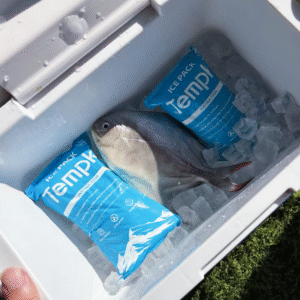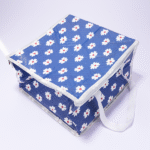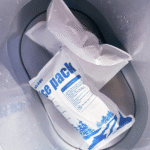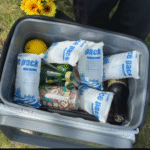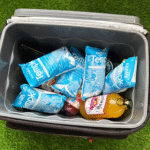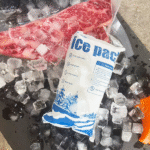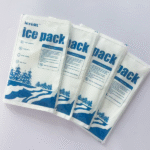Bulk Dry Ice Pack Sheet: Which Solution Wins in 2025?
If you run temperature-sensitive lanes, a bulk dry ice pack sheet helps you hit target temps, cut waste, and standardize pack-outs. Within the first 50 words, we name our main keyword: bulk dry ice pack sheet. You’ll see clear sizing rules, venting steps, and when to choose gel vs. dry ice to keep products safe for 24–72 hours. This guide is written for busy ops teams.
-
When a bulk dry ice pack sheet beats loose blocks for uniform cold and safety
-
How to size a bulk dry ice pack sheet to lane duration and insulation class
-
How to vent a bulk dry ice pack sheet to avoid pressure and burst risks
-
When to switch from bulk dry ice pack sheet to gel sheets or hybrids
-
2025 trends that upgrade bulk dry ice pack sheet sustainability and ROI
What is a bulk dry ice pack sheet, and how does it work?
Direct answer: A bulk dry ice pack sheet is sold by the case for repeatable pack-outs. Two families share similar names in the market: gel-based “ice pack sheets” for 0–8 °C, and ventable CO₂ dry ice sheets for subzero lanes. Both formats wrap products evenly and stabilize temperature profiles.
bulk_dry_ice_pack_sheet
bulk-dry-ice-pack-sheet-article
Explanation: Gel sheets are water-based cells you hydrate, freeze flat, then cut to fit. They hold 0–8 °C for ~24–48 hours in insulated shippers and are reusable. Dry ice sheets are multi‑cell CO₂ formats that sublimate to maintain deep‑frozen temps; they require vent paths and UN1845 labels when mass is high. Use gel for chilled lanes; use dry ice for frozen or long routes.
bulk_dry_ice_pack_sheet
bulk-dry-ice-pack-sheet-article
Key terms in plain language (long-tail: dry ice vs gel sheet)
-
Sublimation: Solid CO₂ turns to gas; there’s no liquid stage.
-
Venting: A small, deliberate gas‑escape path that prevents pressure build-up.
-
Headspace: Extra volume inside the shipper for gas; stabilizes pressure.
-
Barrier film: Plastic that blocks moisture/air; great for cold, but needs venting.
| What You’re Choosing | Typical Options | Why It Matters | Practical Benefit |
|---|---|---|---|
| Cell count | 12 / 24 / 48 | Controls surface area & rate | Tune to lane duration |
| Unit mass per sheet | 0.5–2.0 lb | Thermal inertia | Match ambient profile |
| Film thickness | 4–6 mil | Tear resistance | Survives automation |
| Venting feature | Micro‑vent / fold gap | Prevents overpressure | Safe & compliant |
| Case size | 24 / 48 / 96 | Replenishment cadence | Fewer stockouts |
Practical tips and use cases (long-tail: dry ice vs gel sheet for 2–8 °C)
-
Chilled foods and 2–8 °C meds: Prefer gel sheets; they avoid CO₂ handling and keep goods above freezing.
-
Deep‑frozen items: Prefer a bulk dry ice pack sheet; add a barrier tray to protect packaging.
-
Hybrid: Wrap with gel and place a small dry ice slab on top for longer frozen holds; always vent the shipper.
bulk_dry_ice_pack_sheet
Real case: A butcher lined sides with two gel sheets and capped with a top sheet in summer heat (~30 °C). Meat arrived at 3–5 °C and wet‑box complaints dropped.
bulk_dry_ice_pack_sheet
How do you size a bulk dry ice pack sheet to your lanes?
Direct answer: Start with lane duration + insulation class to estimate sheets per box, then validate at the warm edge. Avoid over‑icing; it adds cost and CO₂ volume without real benefit. Begin small and adjust by ±1 sheet.
bulk-dry-ice-pack-sheet-article
Deeper explanation: Time, target temperature (e.g., ≤ −20 °C vs 0–8 °C), ambient map, payload mass, and R‑value determine cooling mass. Gel sheets for chilled lanes typically hold 24–48 hours; dry ice sheets can reach 48–72 hours with proper venting. Add 20–30% buffer for porch dwell or peak summer. Log temperature on trial runs and lock recipes.
bulk_dry_ice_pack_sheet
Quick lane‑first sizing method (long-tail: bulk dry ice pack sheet sizing)
-
Map lane hours by ambient bands.
-
Pick shipper class (EPS/PU/VIP).
-
Start with 3 sheets for 24–36 hr food lanes; 4–6 sheets for longer or frozen targets.
-
Validate warm; shift by ±1 sheet; publish the recipe card.
bulk-dry-ice-pack-sheet-article
| Lane Duration | Container | Starting Sheets | Notes |
|---|---|---|---|
| 24–36 hr | EPS | 3 | Top, bottom, side |
| 36–48 hr | EPS/PU | 4 | Split 2/2 top & bottom |
| 48–60 hr | PU/VIP | 5–6 | Add side strips; vent notch |
| 60–72 hr | VIP | 6–8 | Engineered micro‑vents required |
A simple self‑check calculator
How do you vent a bulk dry ice pack sheet safely?
Direct answer: Always provide two vent paths: one inside the bag (fold gap or micro‑vents) and one in the outer shipper (lid notch/plug). Label dry ice as UN1845 with net weight when required.
bulk-dry-ice-pack-sheet-article
Why it matters: Dry ice expands ~750× as it becomes gas; without relief, bags can rupture or lids lift. Micro‑vents (2–3 mm) near bag corners or a 3–5 mm fold gap keep pressure manageable. Confirm vents are not blocked by gel wraps or dunnage. Validate at 23–25 °C with a datalogger.
bulk-dry-ice-pack-sheet-article
Field‑proven venting SOP (long-tail: how to vent dry ice packaging)
-
Do not fully seal the inner bag.
-
Verify a relief notch or plug in the shipper.
-
Mark “Dry Ice – UN1845” + net weight (kg).
-
Audit 5 boxes per line per day during peak.
bulk-dry-ice-pack-sheet-article
| Risk Scenario | Cause | Prevention | Result |
|---|---|---|---|
| Bag rupture | Fully sealed bag | Micro‑vents or fold gap | Safe venting |
| Lid lift | Airtight shipper | Relief notch/plug | Pressure control |
| Frost damage | Direct contact | Barrier tray/sleeve | Product integrity |
| Over‑icing | Habitual extra ice | Validated recipes | Lower waste |
Bulk dry ice pack sheet vs. gel sheet: which should you choose?
Short answer: Choose gel for 0–8 °C, no hazmat, and reuse; choose a bulk dry ice pack sheet for deep‑frozen lanes or >48 hours. Hybrid packs extend frozen time and smooth temperature swings.
bulk_dry_ice_pack_sheet
Context: Gel sheets hydrate–freeze–pack and can be cut along seams for 360° coverage. Dry ice sheets are non‑reusable but deliver sub‑zero holds; they require venting and labeling when mass exceeds limits. For precise 2–8 °C, combine gel with PCM to avoid accidental freezing.
bulk_dry_ice_pack_sheet
At‑a‑glance comparison (long-tail: dry ice vs gel sheet)
| Criteria | Gel Sheet | Dry Ice Pack Sheet | What it means for you |
|---|---|---|---|
| Temperature | 0–8 °C | ≤ −78.5 °C | Chilled vs deep‑frozen control |
| Duration | 24–48 h | 48–72 h (vented) | Depends on R‑value & mass |
| Reusability | Yes | No | Cost per shipment |
| Safety | Non‑hazmat | Hazmat | Training & labels |
| Best use | Produce, biologics 2–8 °C | Ice cream, long frozen lanes | Choose per lane |
Pro moves you can use today
-
Pre‑chill everything: Cold product + cold shipper = longer holds.
-
Provide 360° coverage: Top, bottom, and sides to eliminate warm corners.
-
Add a spacer layer: Buffer freeze‑sensitive packaging from direct cold.
bulk_dry_ice_pack_sheet
2025 developments and trends for bulk dry ice pack sheet programs
Trend overview: Expect smarter films with pressure‑responsive vents, recyclable mono‑material barriers, and predictive pack‑out software. PCM gel sheets are gaining traction for precise 2–8 °C control, often replacing dry ice in compliant lanes. The cold‑chain market continues to expand rapidly into 2025.
bulk_dry_ice_pack_sheet
bulk-dry-ice-pack-sheet-article
Latest progress at a glance
-
Smart vent films: Open at low PSI, then re‑seal at rest for safer handling.
-
Predictive dosing: Route‑aware tools set exact sheet counts per shipment.
-
Recyclable sleeves: Hybrid Kraft–film outers reduce plastic mass.
bulk-dry-ice-pack-sheet-article
Market insight: Reusable gel programs reduce hazmat fees and simplify training. Regulators continue to emphasize venting and labeling for dry ice, increasing the value of validated recipes. Firms that standardize hybrid gel+PCM or sheet‑based dry ice achieve fewer rejects and lower cost.
bulk_dry_ice_pack_sheet
How should you buy, store, and stage a bulk dry ice pack sheet?
Direct answer: Keep bulk dry ice pack sheet SKUs in closed cases, kit by cart, and trigger replenishment on the last case. Aim for 0.8–1.2 cases per week per line so opened cases do not drift across shifts.
bulk-dry-ice-pack-sheet-article
Details: A bulk dry ice pack sheet program works best with two case sizes (48 and 24) to smooth demand. Stage only today’s open cases at lines, color‑code by lane type, and cycle‑count partials daily. Use e‑paper labels to show recipe and remaining counts. This reduces waste and speeds audits.
bulk-dry-ice-pack-sheet-article
Warehouse & automation tips (long‑tail: warehouse playbook for bulk dry ice pack sheet)
-
Slot each bulk dry ice pack sheet SKU in a dedicated pallet position.
-
Feed cases to carousels; pickers drop sheets into totes for each order.
-
Vision checks confirm top/bottom placement of each bulk dry ice pack sheet.
-
End‑of‑shift: close partials, log exceptions, and return to bin.
bulk-dry-ice-pack-sheet-article
Frequently asked questions
Is a bulk dry ice pack sheet actually dry ice?
Sometimes yes. The term in the market covers both gel “ice pack sheets” and CO₂ dry ice sheet formats. Check your spec sheet and venting requirements.
bulk_dry_ice_pack_sheet
How long will a gel sheet stay cold?
Typically 24–48 hours in a good insulated shipper; add mass or better insulation for longer routes.
bulk_dry_ice_pack_sheet
Do I need to vent dry ice sheets?
Yes. Provide an inner vent path and an outer relief notch or plug; label UN1845 with net weight as applicable.
bulk-dry-ice-pack-sheet-article
How many sheets per box should I start with?
Begin with 3–4 for 24–36 hr food lanes; 6–8 for longer or colder targets; validate and adjust.
bulk-dry-ice-pack-sheet-article
Can I mix gel sheets and dry ice?
Yes. Wrapping with gel and placing a small dry ice slab on top extends frozen hold and smooths temperatures—ensure proper venting.
bulk_dry_ice_pack_sheet
Summary and recommendations
Bottom line: A bulk dry ice pack sheet strategy is scalable across seasons. A bulk dry ice pack sheet program improves repeatability, safety, and cost control. Size by lane and insulation, validate at the warm edge, and vent every inner bag and outer shipper. Use gel for chilled lanes, dry ice sheets for deep‑frozen, and hybrids for long routes.
bulk_dry_ice_pack_sheet
bulk-dry-ice-pack-sheet-article
Next steps: For your next trial, place one extra bulk dry ice pack sheet in warm lanes and remove it in cool lanes to see variance. Map your lanes, choose container classes, set starting sheet counts, and publish pack‑out cards. Train on venting/labels, log validation data, and review exceptions within 24 hours. Then scale with 2025 materials and smart QA.
About Tempk
We engineer cold‑chain packaging that is safe, sustainable, and easy to run at scale. Our bulk dry ice pack sheet SKUs include vented films, recyclable sleeves, and lane‑specific playbooks. Clients report lower over‑icing and fewer handling defects during peak seasons. Let’s model your routes and deploy a validated program that stays cold, safe, and compliant.






